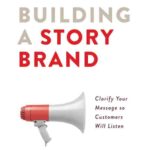Most entrepreneurs are full of ideas. And many of those ideas are actually good. But even great ideas fail when they’re not grounded in market reality. That’s why, before launching any new product or service, it’s essential to ask four brutally honest questions:
- Do customers recognize they have a problem?
- If there was a solution, would they buy it?
- Would they buy it from us?
- Can we actually build it?
Let’s break each of these down—and I’ll share a real-life example from when I owned an Invisible Fencing dealership to show how easily businesses can stumble if they miss even one of these questions.
1. Do Customers Recognize They Have a Problem?
This is where it all begins. If your customer doesn’t even realize they have a problem, they’re not going to look for a solution—and definitely not yours.
When I started selling Invisible Fencing systems, it seemed obvious to me that pet owners wanted a hassle-free way to contain their dogs. Traditional fences required constant upkeep: painting, weed-whacking, and fixing storm damage. The buried wire technology solved all those problems.
But here’s the catch—our customers weren’t thinking that far ahead. They only saw the initial issue: “How do I keep my dog in the yard?” Maintenance headaches from a wooden or chain-link fence didn’t register as a problem, at least not yet. We were solving a problem they didn’t realize they had.
This is what makes customer education so vital. You’re not just selling a product—you’re often uncovering a hidden pain point and explaining why it matters.
2. If There Was a Solution, Would They Buy It?
Even if someone admits they have a problem, that doesn’t mean they’re ready to spend money to fix it. There’s a difference between interest and intent.
I’ve seen countless inventors and startups burn through cash building clever tools or platforms that never catch on—because people just weren’t willing to pay for the cure. Sometimes the perceived pain isn’t painful enough. Other times, customers are used to “living with it” and don’t want to change.
That’s why validating willingness to pay is critical. Surveys, pre-orders, or even simple A/B testing can reveal whether your solution has true commercial potential or is just a “nice-to-have.”
3. Would They Buy It From Us?
Let’s assume customers recognize the problem and want to solve it. Why would they buy from you and not someone else?
This is where brand trust, credibility, distribution, and pricing come into play. For Invisible Fencing, we had a big advantage: our product was patented, meaning we were the only game in town. But that exclusivity also meant we had a heavier burden to educate the market—no one else was helping us spread the word.
Once we got someone’s attention and showed them how it worked—and that it cost half as much as building a fence—they were often sold on the spot. But reaching that point took effort. We had to be credible educators, not just product pushers.
Related Post: The Power of Educational Marketing: Unlocking the Potential for Small Businesses
In a competitive market, you’ll need more than just a great product. You’ll need a reason customers choose you—price, service, brand, delivery, or community reputation.
4. Can We Build It?
This final question seems obvious, but too many people skip it. Visionaries love to dream, and dream big. But just because something should exist doesn’t mean you can afford to build it—or build it well.
It’s not just about technical feasibility. It’s about business feasibility: Do you have the resources, the team, and the time to deliver what you promise?
Building prototypes or using early testing models—like landing pages, demos, or even mockup videos—can help you gauge interest before spending big bucks on development. The Lean Startup movement popularized this idea for a reason: you want to validate before you invest.
In the early days of our Invisible Fencing business, sales were slow despite having a truly innovative product. Why? Because we didn’t initially focus on educating customers about the hidden pain our product solved. Once we adjusted our messaging and addressed all four of these questions, things changed dramatically.
The real takeaway? It’s not about the product. It’s about the customer’s perception of the problem—and your ability to lead them to the solution.
Do you ask these four questions before launching your next idea—or are you building solutions in search of a problem?












